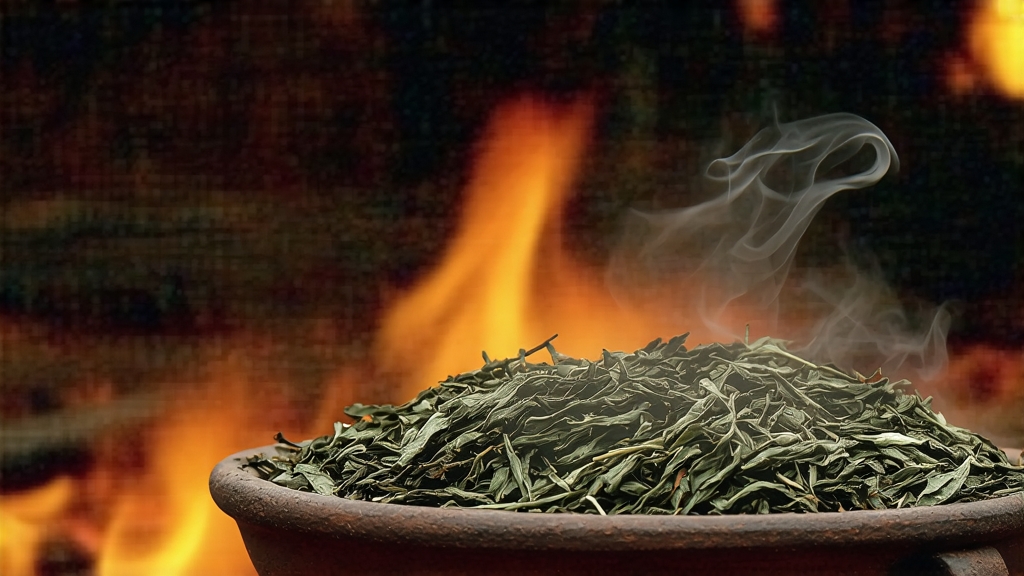
Long before English duchesses measured leaves into porcelain pots and Indian planters dreamed of Assam, a small village in China’s Wuyi Mountains produced the very first black tea the world would ever taste. Locals call it Zheng Shan Xiao Zhong—“Small Leaf from the Original Mountain”—but the West knows it as Lapsang Souchong, the primordial campfire in the genealogy of every breakfast cup that followed. To understand this tea is to hold a glowing ember of history, geography and human ingenuity in your palm.
-
A history written in smoke
The Songluo River bends like a dragon’s tail through the granite gorges of northern Fujian. In 1646, late-Ming militias swept across these valleys; Qing troops torched the surrounding pine forests to flush out resistance. Tea farmers, trapped between armies and deadlines, rushed the season’s final leaves over open resinous fires so the crop would dry before the soldiers arrived. The accidental smoke infusion not only preserved the leaf but imparted a haunting sweetness that travelled faster than war news. By 1662, when Catherine of Braganza carried chests of it to London as part of her dowry, “Bohea” (the Fujianese pronunciation of Wuyi) became the fashionable toast of the Thames. The East India Company copied the style, Assam gardens were planted to imitate it, and the global black-tea era ignited—literally—beneath layers of pine smoke. -
Terroir: why only Wuyi tastes like Wuyi
The Wuyi massif is a UNESCO geopark of weathered cliffs, mineral-rich laterite soil and a subtropical monsoon climate that traps cloud belts between 300 m and 1,200 m elevation. Diurnal swings of 15 °C coax the tea bush (Camellia sinensis var. sinensis, Xiao Ye Zhong cultivar) into slow, terpene-rich growth. The same porosity that makes the cliffs ideal for cliff-hung oolong also allows roots to sip dissolved quartz and potassium; the leaf responds with a natural minerality reminiscent of wet stone and iris. Attempts to transplant the cultivar to flatland estates lose the crushed-rock note within a single generation, guaranteeing that authentic Lapsang Souchong remains microscopically small—barely 500 ha of certified “true origin” gardens. -
Two faces of smoke: traditional vs. modern
Purists divide Lapsang into two stylistic siblings. Traditional Zheng Shan Xiao Zhong is withered over local Masson pine fires built in shallow pits inside bamboo sheds. The fresh leaf—one bud, two leaves—rests on bamboo trays 1.5 m above the embers for 8–10 hours, absorbing volatile guaiacol and syringol that polymerize into the signature resinous sweetness. After rolling and oxidizing 80 %, the leaf is re-fired three more times at descending temperatures, each session shorter, until the moisture drops below 5 %. No external smoke is added during the final bake; the aroma is locked in, not painted on.
The export style created for 19th-century European blenders flips the process. Finished black leaf is carried into a separate “smoking room” where fresh pine bows are set alight; cool smoke wafts upward through mesh floors for 6–12 hours. The result is overtly tarry, sometimes described as “tire fire” by modern cuppers. While this louder version still dominates commodity markets, specialty buyers increasingly seek the subtler, traditionally smoked leaf whose fragrance lingers like the memory of a distant barbecue rather than a burning fence.
- Craft in slow motion
A single kilo of traditional Lapsang demands 48,000 pluck-points. Picking starts at dawn when the mountain mist is still evaporating; dew acts as a natural antioxident rinse. Leaves are laid no thicker than 3 cm on bamboo trays so every blade feels the same convection current. The first turning of the withering leaf is done by hand—no gloves—because artisans claim the skin’s micro-flora communicate with the leaf’s enzymes, softening grassiness. Rolling follows the “three-light, seven-heavy” rule: three minutes of gentle pressure to fracture cell walls, seven minutes of vigorous kneading to release catechins, repeated four cycles. Oxidation occurs in pine-wood